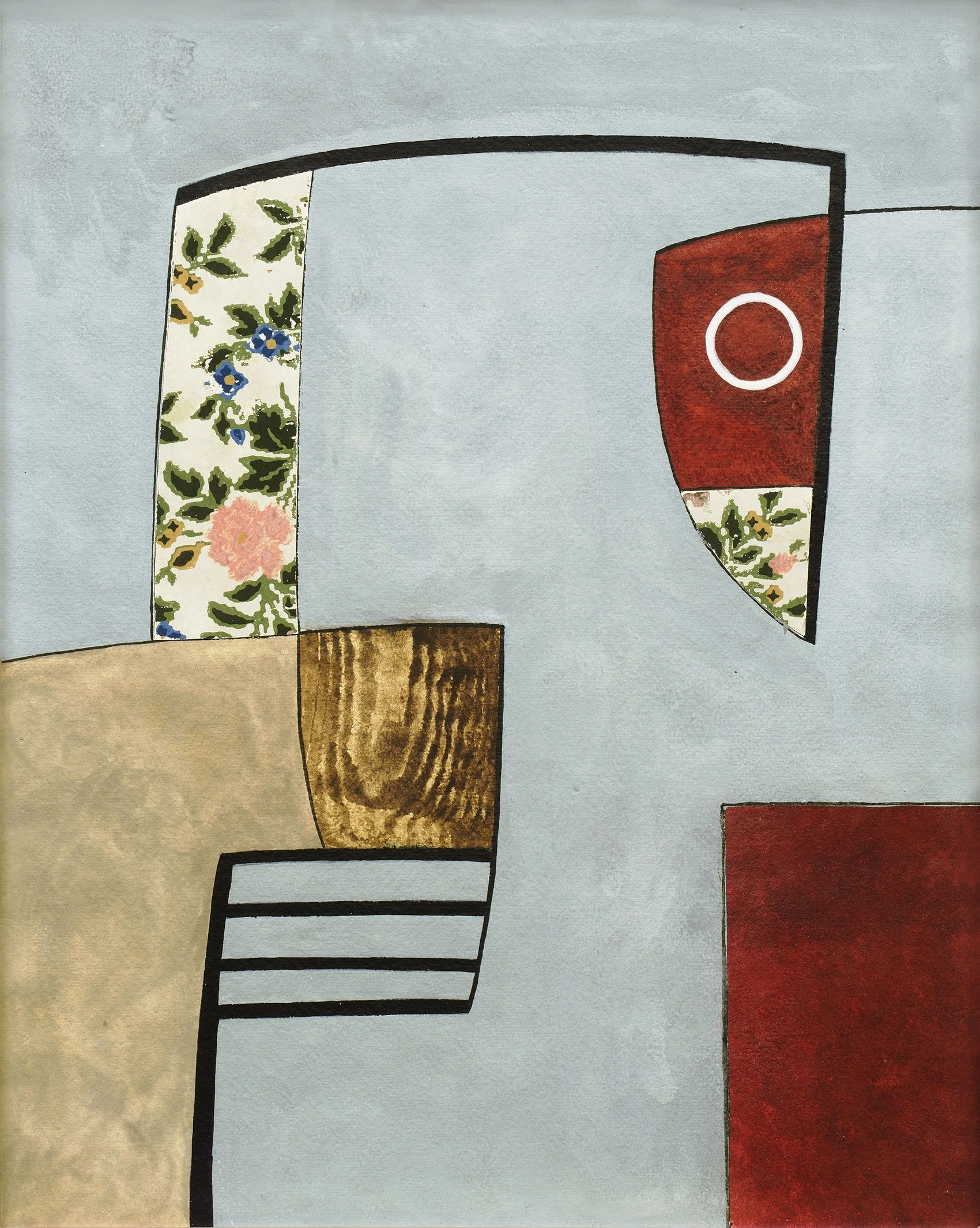GEORGE L. K. MORRIS (1905-1975)
Available Work | Biography
Biography • George L. K. Morris (1905-1975)
Born in 1905, George Lovett Kingsland Morris came from a family that provided him with educational opportunities and exposure to culture. At Yale University Morris majored in both art and literature. Upon his graduation in 1928, Morris continued art courses at the Art Students League, where he studied with John Sloan and Kenneth Hayes Miller until 1930. He then went to Paris, taking classes at the Academie Modèrne with Fernand Léger and Amédée Ozenfant. While abroad he exhibited a deep commitment to abstraction, working in a style that deconstructed primitive forms within the framework of Cubism. Morris believed that abstraction allowed for the creation of a universal art that would speak to all.
Upon his return to New York, Morris continued to paint, as well as found and edit the literary magazine The Miscellany. He also maintained relationships with the Modernists he had met in Paris through frequent return visit, and along with his friends Albert E. Gallatin and Jean Hélion, significantly advanced the cause of modern art in America through first-hand knowledge of the trends in Europe. In his writing Morris sought to increase public appreciation of modern art by placing it in an historical context. Morris served as the curator for A. E. Gallatin’s Gallery of Living Art at New York University, which exhibited major works by Pablo Picasso, Fernand Léger, Joan Miró, and Piet Mondrian, among other European and American modernists.
Morris had his first one-man exhibition in 1933 at the Berkshire Museum, which also held a retrospective of his work in 1966. His second solo exhibition was held at Yale University in 1935. Morris served on the board of the Museum of Modern Art in its early years. Alfred Barr’s refusal to include American artists in the 1936 exhibition Cubism and Abstract Art led to Morris and Charles Green Shaw’s resignation from the board. Morris then put his energy into the American Abstract Artists group which was founded in late 1936. Morris not only showed his works in the AAA exhibitions (1937-1946), he edited the yearbook and was then president from 1948 to 1950. Morris co-published the art magazine Plastique in 1937 and was editor of the Partisan Review from 1937 to 1943. Morris was also an original member of the Federation of Modern Painters and Sculptors, founded in 1940. During WWII Morris served as a draftsman for a naval architectural firm. After 1947 he devoted almost all of his time to his art, writing only on occasion. During this period he began to incorporate references to the human figure into his otherwise hard-lined, non-objective style.
In New York Morris exhibited annually at the Whitney Museum of American Art from 1938 until 1965 and showed his work at the 1939 Word’s Fair. Morris also exhibited at the Pennsylvania Academy of the Fine Arts from 1945 until 1956 and again in 1966, when he was awarded the Temple Gold medal. Morris participated in the Corcoran Gallery’s biennials five times between 1953 and 1965 and exhibited at the Carnegie Institute from 1944 to 1946, as well as the Art Institute of Chicago in 1942, 1946 and 1947. Some of the important group exhibitions in which Morris took part include Abstract Painting & Sculpture in America, Museum of Modern Art, 1951 and Younger American Artists, Solomon R. Guggenheim Museum, 1954.
Morris consistently aligned himself with the top galleries of New York. Morris was represented by the prestigious Downtown Gallery in the 1940s and early 1950s, then represented by Alan Gallery in the late Fifties, Hirschl & Adler Gallery in the Seventies, and Salander-O’Reilly in the Eighties. Morris’s art career included teaching positions at the Art Students League from 1943 to 1944 and at St. John’s College in Annapolis from 1960 to 1961. Morris died in New York in 1975.
Morris along with his wife Suzy Frelinghuysen and his friends A.E. Gallatin and Charles Green Shaw were the subject of an exhibition titled The Park Avenue Cubists held at the Grey Art Gallery at New York University in 2003.

